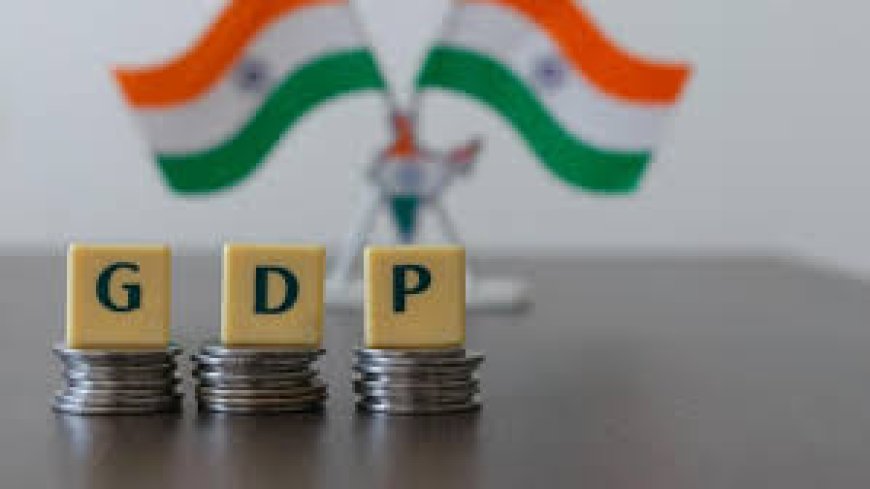India's GDP Grew by 7.4% in Q4 FY25, Surpassing Forecasts and Signaling Strong Recovery
India’s GDP grew by 7.4% in the March 2025 quarter, exceeding expectations of 6.7%. The growth was led by manufacturing, services, and construction, signaling a strong economic rebound.

India’s economy rebounded sharply in the final quarter of the financial year 2024-25, with Gross Domestic Product (GDP) expanding by 7.4% year-on-year for the January–March 2025 period. The growth exceeded market expectations of 6.7%, indicating renewed momentum following a year of global and domestic headwinds.
Recovery Beyond Expectations
The robust performance in Q4 FY25 caps a year that began on a cautious note. India’s GDP had slowed to 6.2% in the first quarter of FY25 amid rising inflation, elevated interest rates, and sluggish global trade. However, domestic resilience, higher government spending, and a recovery in private investment helped the economy bounce back stronger than expected.
“This quarter’s growth rate of 7.4% is a clear sign that the Indian economy is not only stabilizing but also regaining its pre-pandemic dynamism,” said Radhika Rao, Senior Economist at DBS Bank. “We’re seeing green shoots across manufacturing, construction, and services, which together have contributed to this upside surprise.”
Sectoral Performance: Manufacturing and Services Lead
According to data released by the Ministry of Statistics and Programme Implementation (MoSPI), the manufacturing sector grew by 9.1% in Q4, reversing the sluggishness seen in previous quarters. This growth was buoyed by increased industrial output and easing input costs.
The services sector, which accounts for more than 50% of India’s GDP, expanded by 7.8%, led by strong performance in financial services, real estate, and public administration. The construction sector also grew significantly, at 10.2%, supported by infrastructure push from both the public and private sectors.
Agriculture, however, showed modest growth of 2.6%, reflecting the impact of erratic monsoon patterns and uneven rabi crop yields.
Market Reaction and Economic Sentiment
The Indian stock markets responded positively to the GDP data. The BSE Sensex rose by 412 points, while the Nifty 50 closed above the 23,300 mark, driven by gains in banking, FMCG, and infrastructure stocks.
“Markets had already priced in a moderate beat, but 7.4% is much higher than anticipated. It reinforces confidence that India remains among the fastest-growing major economies globally,” said Amit Shah, Head of Research at ICICI Securities.
Bond yields remained stable as the data is unlikely to alter the Reserve Bank of India’s (RBI) current monetary stance immediately. The central bank is expected to maintain its focus on inflation targeting while monitoring growth sustainability.
International Comparison and Global Context
India’s performance stands in contrast to several major economies that have continued to face growth challenges. China’s Q1 2025 GDP came in at 4.8%, while the Eurozone recorded a modest 0.5% expansion. The U.S. economy also showed slower growth amid persistent inflation and high interest rates.
“India’s demographic advantage, expanding middle class, and structural reforms are helping it decouple to an extent from global fragilities,” noted Sonali Gupta, Asia Economist at HSBC. “This resilience will continue to attract foreign investors.”
Government and Policy Implications
Finance Minister Nirmala Sitharaman welcomed the data, stating that “India’s growth is a reflection of sound policy decisions, continued capital expenditure, and improving business sentiment.” The government has focused on increasing capital spending, digital infrastructure, and MSME support to sustain long-term growth.
The RBI, which is scheduled to meet for its bi-monthly policy review in June, may find room to maintain its policy rates, as inflation remains within the targeted range of 4% ± 2%, and growth appears stable.
Investor Outlook: India’s Growth Story Strengthens
For domestic and foreign investors, the better-than-expected GDP numbers reaffirm India’s position as a key emerging market. Sectors like infrastructure, banking, consumer durables, and renewable energy are expected to benefit from continued policy support and rising demand.
“With political stability following the 2024 general elections and renewed focus on fiscal consolidation, India is set to remain an attractive investment destination,” said Meera Desai, Portfolio Manager at Franklin Templeton India.
Foreign direct investment (FDI) inflows are also likely to rise, especially as global companies look to diversify supply chains under the "China+1" strategy.
What's Your Reaction?
 Like
0
Like
0
 Dislike
0
Dislike
0
 Love
0
Love
0
 Funny
0
Funny
0
 Angry
0
Angry
0
 Sad
0
Sad
0
 Wow
0
Wow
0












































































